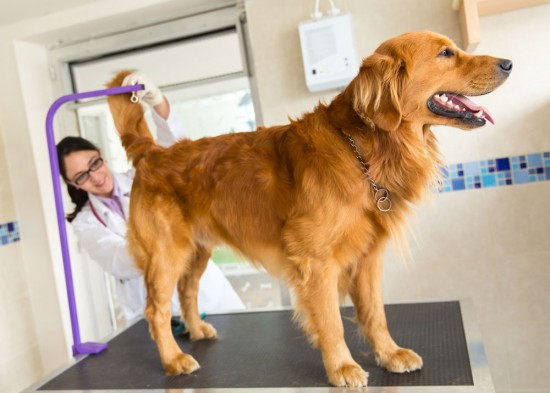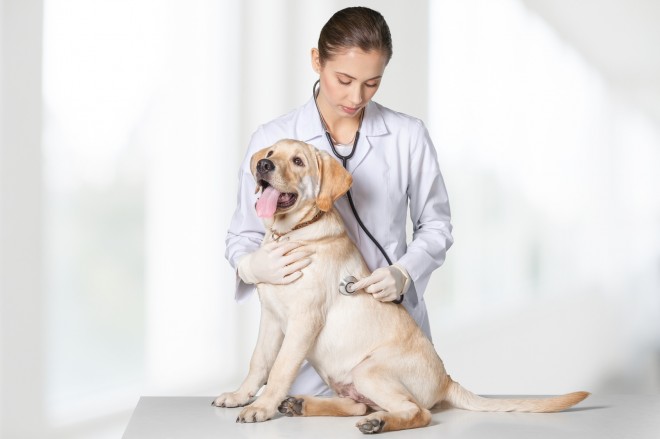
While many pet owners think that fleas and ticks are just a part of owning a dog or a cat, that isn't necessarily the truth. You can make sure your pet stays healthy and pest free by taking just a few simple precautions along the way. Fleas and ticks aren't just something that you should dismiss as an everyday occurrence. If not properly treated and prevented, they can lead to long term damage and even more catastrophic results.
Why You Should Care
Fleas and ticks are seen as more of an annoyance than a real threat to the health of your dog - but this is not the case. For example, some fleas will carry tapeworms inside of themselves. And when your dog goes to groom themselves, they can accidentally ingest this flea with the tapeworm in it, causing them to get tapeworms themselves. Though in most cases, this tapeworm infection isn't a terrible thing, if the dog gets a severe infestation, it will require medical intervention.
Another concern for fleas and ticks are those dogs that are allergic to the bites. Some dogs are severely allergic to flea bites and will have problems with itching and infected skin from that itching. The itching can also lead to bald spots of hair loss which can open up the dog to further infections. In dramatic cases, the dog can also begin to suffer from anemia.
In terms of being infected by a tick, the dog can develop Lyme disease if the tick isn't found within twenty four hours. This is why it's so important for you to make sure that you are looking at your dog's hair on a regular basis and taking steps to prevent these pests from being on the skin at all.
What You Might See
If your dog is infested with fleas or ticks, it will be fairly obvious in most cases. Fleas are small, but you can often see them jumping around in the fur or the coat of your dog. They look like small little bugs with tiny legs and a rounded body. Ticks are larger and tend to grab onto the fur or the skin of the dog, requiring that you pull them off with a tweezers in many cases.
Your dog may begin to show signs of being infested by itching and scratching themselves or by having rashes on their body. This is why it's so important to take time to brush your dog and to look at its skin on a regular basis. You need to spot problems before they lead to whole body infections.
Prevention is the Key
To make sure that your dog is free of fleas and ticks, there are several steps you can take. The most obvious is to make sure that you're not putting the dog into a situation where they might pick up these insects - outdoors, other dogs, etc. But this is not the most realistic solution. Instead, you will want to make sure you are taking your dog for flea baths or treatments or even doing these things on your own. These treatments can often last for a few months, allowing the dog to have a sort of chemical shield that keeps the pests from taking hold.
You can also find that veterinarians also have access to prescription strength flea medications that are applied to the skin at certain time intervals. This will also repel the fleas and the ticks, allowing you to know that your dog is safe.
If you've already had troubles with fleas or ticks in the past, you will also want to make sure you are ridding your home of these pests to prevent problems from coming up again and again. You can purchase flea spray for your home or have a professional service come out to eradicate any stragglers in your house.
Dealing with Problems
The good news is that treating dogs with fleas or ticks is actually an easy process. All you need to do is treat them with medication or give them a flea bath to get rid of fleas; with ticks, you simply need to remove the tick within twenty four hours and then apply rubbing alcohol or another antiseptic to the area.
In the case of larger flea and tick problems, you might want to bring your dog into the vet, especially if they continue to have problems despite trying to rid your home and your dog of the pests. You might also want to talk to a vet about getting a prescription that can be refilled whenever you begin to notice problems again.
You can make sure your pet is not suffering from fleas and ticks by simply preventing them from being on their skin in the first place - and then doing everything you can to make sure they stay pest free.
 Benefits Of Big Bags Of Salmon Meal For Your Dog
Benefits Of Big Bags Of Salmon Meal For Your Dog
Benefits Of Big Bags Of Salmon Meal For Your Dog
Benefits Of Big Bags Of Salmon Meal For Your Dog
 Anal Gland Problems In Dogs
Anal Gland Proble
Anal Gland Problems In Dogs
Anal Gland Proble
 Let Reefs help you get the most out of your marine aquarium experience
Let Reefs help you get the most out of your marine aquariu
Let Reefs help you get the most out of your marine aquarium experience
Let Reefs help you get the most out of your marine aquariu
 Reasons For Why Dogs Might Not Urinate After Surgery
Reasons For Why D
Reasons For Why Dogs Might Not Urinate After Surgery
Reasons For Why D
 How To Plan A Holiday In The Uk With Your Dog In Tow
How To Plan A Hol
How To Plan A Holiday In The Uk With Your Dog In Tow
How To Plan A Hol
Copyright © 2005-2016 Pet Information All Rights Reserved
Contact us: www162date@outlook.com